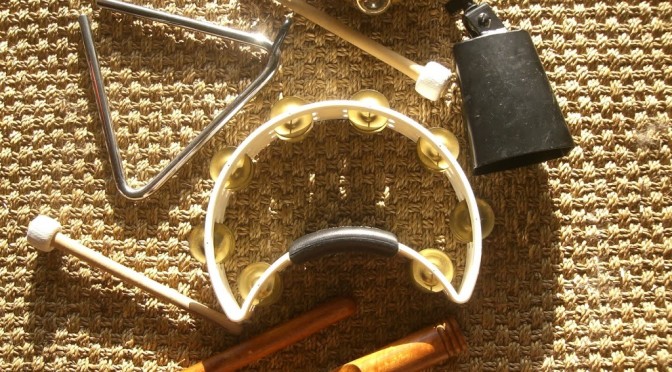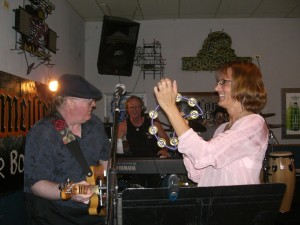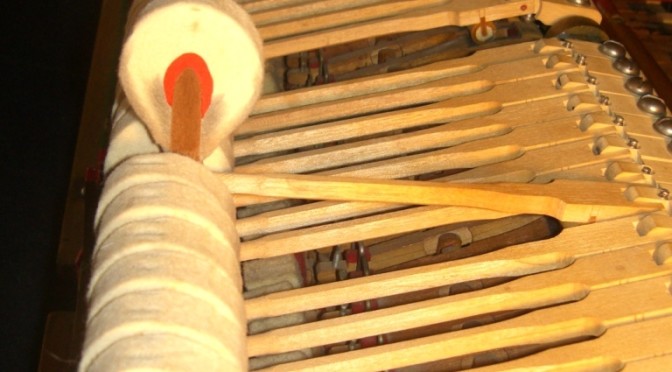Halloween and classical music are a natural fit. Shrieking violins, demonic trills, spooky organs: the range of sounds available to the classical composer can conjure up visions of demons and ghosts, witches and warlocks.
Halloween is particularly well-represented by Romantic music — that is, music composed after about 1825 to the beginning of the twentieth century. This is Romantic with a big “R” — big feeling, big fears, big mysteries, big stories. Before the Romantic period, composers didn’t reserve a whole lot of creativity for titles, and we got stuck with something like “Sonata in A minor.” And one million “Minuets.”
But the Romantics, now that’s different. Thematic music told whole stories, without words. In Tchaikovsky’s “1812 Overture,” we can listen to Napoleon’s invasion of Russia; we hear the prayers before battle, the horns and drums of marching cavalries, snippets from the French national anthem, folk dances around the soldier’s campfires, and the flaming retreat from Moscow.
Not to say that other composers didn’t have their share of spooks. From Bach to the moderns, Halloween and related myths — full of ghostly stories, mysteries, and the grand feelings of passion and death — are well-represented.
Commerce with the Underworld: The Sale of Souls and Dancing with the Devil
One of music’s most enduring myths is that of the musician who sells his soul to the devil. The Faustian bargain, described in poetry by Goethe, found a receptive audience among concert-goers, who were more than willing, for example, to believe that the great violinist Niccolo Paganini sold his soul to the devil. (So, according to legend, did the twentieth-century blues master, Robert Johnson; indeed, one can visit the highway crossroads where the transaction is said to have taken place.)
- Carl Maria von Weber, Der Freischutz. This piece describes the forester who meets the devil in a forest, and agrees to sell his soul. Cheap? Expensive? The price was seven magic bullets.
- Camille Saint-Saens, Danse Macabre. It’s based on a poem where Death appears on Halloween to call the skeletons from their graves. How much spookier do you need?
- Franz Liszt’s Totentanz. This piece recalls the work of 14th Century artists, who depicted the Dance of Death. This one is based on a poem by Henri Cazalis.
- Franz Liszt: Mephisto Waltz. Liszt wrote this to depict Mephistopheles, who plays his violin at a local pub and seduces the villagers into following him.
Myths and Fairytales
The ghosts and goblins, the legends and myths, of medieval Europe have found a home in the music of the 19th and 20th centuries. As composers experimented with changing keys, new tonalities, dissonance, and sound effects, they found plenty of ways to depict the macabre, the thrilling, and the mysterious.
- Modest Mussorgsky, Night on Bald Mountain. This depiction of a witch’s sabbath was included in Walt Disney’s Fantasia.
- Modest Mussorgsky, Baba Yaga from Pictures at an Exhibition. Another witch’s sabbath, this one atop Mt. Triglav. in this version, the old hag witch flies through the air and lives in a hut make of chicken bones.
- Charles Gounod, Funeral March of a Marionette. You’ve heard this: It’s the famed Alfred Hitchcock theme.
- Franz Schubert, Erl King. The dark and spooky nighttime forest of the 19th century European Romantic makes another appearance in Schubert’s famous lieder. This one is based on a poem by Goethe, which describes the frantic nighttime ride of a father trying to save his son. He fails.
- Cesar Franck, The Accursed Huntsman. Another nobleman, another forest: In this morality tale, a huntsman skips mass to go hunting, and is cursed by the devil.
- Paul Dukas, The Sorcerer’s Apprentice. Who can forget this Halloween favorite, also based on Goethe (Is anyone else seeing a pattern here?) Mickey Mouse portrayed the hapless apprentice in the Walt Disney classic, Fantasia.
- Edvard Grieg, Peer Gynt Suite. Scandinavian myths, with trolls and dwarf-like beings come alive in this Norwegian composer’s classic work. In The Hall Of The Mountain King builds from a slow, portending start to a frantic ending. Whoever is in that hall sounds like they in a massive panic to get out.
- Maurice Ravel, Gaspard de la Nuit. This piano suite depicts a seductive water fairy, a hanged corpse, and mischievous goblin. The last movement, Scarbo (that would be the goblin) is considered one of the most difficult piano pieces ever written.
- Claude Debussy, La Cathedrale Engloutie (“The Engulfed Cathedral”). This piece recalls a story where the devil floors a city by opening the gates to a dike. The bells of the underwater cathedral still ring on occasion.
- Adolphe Adam, Giselle. A nobleman, a peasant girl, love, betrayal, and death by grief. In the second act, he meets here spirit in the forest, and she and her friends start to dance him to death. But she spares him in the ballet’s final moments.
Just Plain Scary Music
Does a piece of music have to have a story or a myth? Does it have to be about the devil, or can it just — evoke mystery, evil, weirdness, fear? Listen to these, and you tell me:
- Johann Sebastian Bach, Toccata and Fugue in D minor. Can you think of scary piece of organ music? Yup, that’s the one. A stalwart of old movies, its first notes virtually guarantee midnight other-worldly trouble. One of the keystones of the organ repertoire — but musicologists debate its authorship.
- Léon Boëllmann, Toccata (fourth movement of Suite Gothique.) This menacing pieces is probably the best known work of this nineteenth-century French composer. The Gothic title tells you all you need to know.
- Olivier Messiaen, “Quartet for the End of Time”. A piece of music written while the composer was a WWII prisoner of war; the subject is the end of the world. What more to say?
- Giuseppe Tartini, Violin Sonata in g minor. “The Devil’s Trill” takes place in the double-trills of the the final movement — scary to musician and audience alike. Music legend tells us that the devil himself played the music to Tartini in a dream.
- Hector Berlioz, Symphonie Fantastique. The Musical autobiography of a demented artist soul, suffering from all the usual things — despair, unrequited love, and let’s not forget an opium trip that shows him his own death (“March to the Gallows”) and the subsequent orgy with witches (“Dream of a Witch’s Sabbath).
- Carol Orff, ” O Fortuna” You have your basic church choir; then you have… THIS. Based on 11th and 12 century poems written in part to satirize the Catholic church, this 20th century adaptation sounds intense? Evil? Epic? And really… it’s used to introduce Simon Cowell and his fellow judges in the X Factor: How much spookier do you need?




